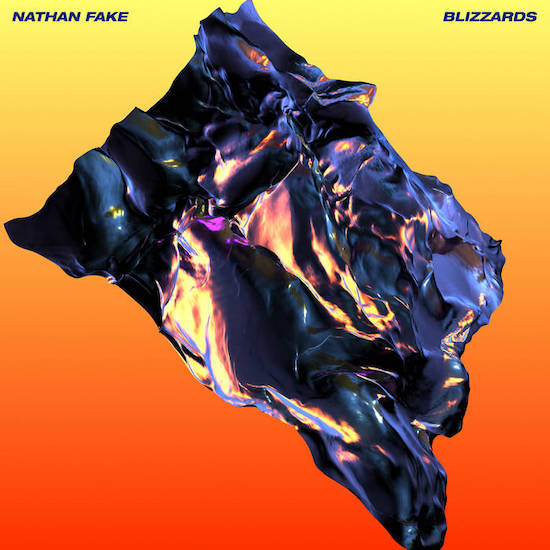Straightaway, that insistent, past-future electronic drum sound every JG Ballard obsessive could love.
ba-da-thump, ba-da-thump, ba-da-thump
But if it’s OK with you, I think it might be best to start at the end: a slow, purposeful deceleration over five minutes, the drumless undoing of all the momentum that came before. This is how Blizzards – Nathan Fake’s follow-up to 2017’s Korg Prophecy-redeeming Providence LP and the cracked Akai Tomcat workout of 2018’s Sunder EP – draws to a close. A train pulling into the station, it is the definitive end of one journey, but, pregnant with possibility, it could also be the beginning of another. A step into the unknown.
I am writing this on day twenty-nine of self-isolation, and I can’t help but draw parallels between the track in question, ‘Vitesse’, and, well, everything. ‘Vitesse’ could be my quarantine brain. ‘Vitesse’ could be the world at large. ‘Vitesse’ could be the score to the disorientingly removed, self-curated montage that flits across our screens at the swipe of a finger, forcing the plot along. There isn’t much else we can do from our units but observe how these things unfold with a sense of dull disbelief, a bit like Ben Wheatley’s vision of High Rise. (Not that I think I’ll wind up eating the dog.)
I wouldn’t be surprised if Fake bristles a bit at these Ballardian allusions – probably obvious, probably slightly cliché – so I’ll stop there. Still, it’s hard to deny the influence, whether directly or indirectly, of old JG & co. on Fake’s current aesthetic. At face, his machine music could be representative of an inhuman sci-fi future that could have been, but the nature of his practice and chosen synths create fissures through which an abundant humanity seeps.
Like bright winter light, there’s a strange, paradoxical warmth in the way Fake wields his jacked, semi-antique equipment, in the way he deploys chilly tones and brittle handclaps – rooted perhaps in his affection for cassette tape recorders or, as showcased on Sunder, the live take. Whatever the reality, Blizzards doesn’t feel like it’s been anywhere near a DAW. Elements of these squirmy, propulsive compositions buzz and click and pop and drop out as Fake embraces gremlins in the circuitry.
Despite inevitable artistic growth, a methodological shift away from the PC, and the evolution of his sonic palette in the almost sixteen years since ‘The Sky Was Pink’ and his days as Border Community’s “bucolic techno” whiz kid, Fake has retained his unique way with melody and his oddball East Anglian sense of the pastoral, which lend his music a wealth of charm and goodwill, even when cathartic or bittersweet. Perhaps more importantly, these qualities also imbue Fake’s music with an indelible sense of self, of individuality. Even when speaking in the language of influence – calling to mind the halcyon days of rave, for example – it’s readily apparent that Fake is using his own voice.
If it isn’t crystal clear by now, Blizzards is a beautiful and fun and affecting record that never fully succumbs to the easy allure of nostalgia over its expansive sixty-four minute runtime. It’s a real achievement. Maybe you’ve read the previous paragraphs and conjured up images of grey, brutalist architecture and grimy rain, and maybe that’s my fault. So I’ll offer up a corrective: a cast concrete playscape, weathered but brightly coloured and sat in a field.


